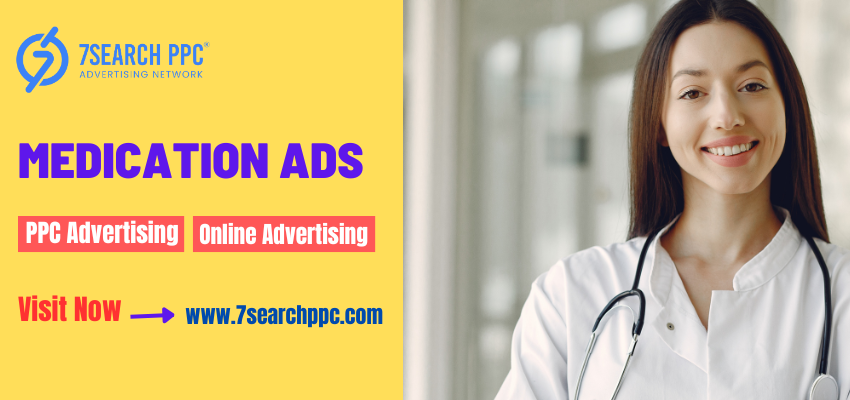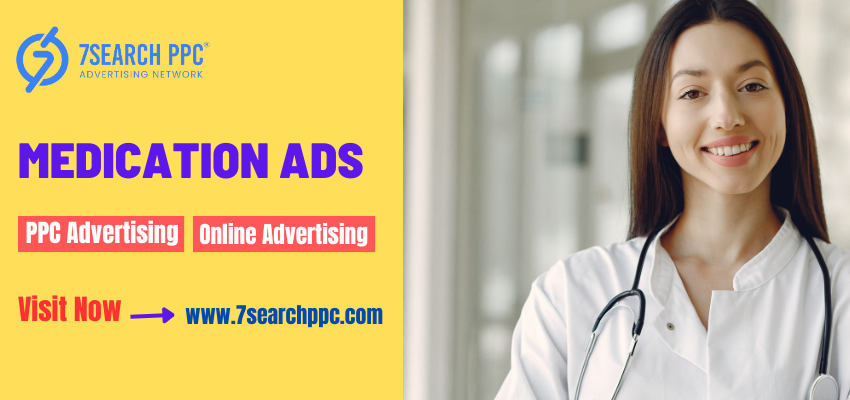Imagine you're feeling unwell and looking for a solution. You see two medication ads—one is filled with complex medical terms and long explanations, while the other speaks to you simply and clearly. Which one would you trust? I know the answer. It is so obvious that you will go with the second option.
In 2025, medicine ads are not just about listing benefits and side effects. They focus on what every business wants—building trust, connecting with people, and sharing the right information in the right way.
Since people are more informed and rules are stricter, brands must make healthcare ads that are clear and follow the medical adverts guidelines because running a pharmacy business requires a responsible approach.
So, what makes a medication ad truly effective in 2025? In this blog, we'll discuss seven key elements that help brands communicate better and earn the trust of their audience.

What are Medication Ads?
Medication ads are advertisements that promote prescription or over-the-counter drugs. These online ads are designed to inform people about a medicine's benefits, uses, and possible side effects.
These ads are designed and launched by pharma and healthcare brands by using various ad formats to promote brand awareness and drive sales. You've likely seen them on pharma websites, healthcare blogs, or social media, often featuring real-life scenarios where a person finds relief from a health issue.
Some ads focus on educating people, while others highlight why a specific pharma or healthcare brand is better. Regulations ensure these ads provide accurate details, and to protect themselves from getting banned, pharmaceutical companies adhere to all necessary ad guidelines.
Traditional vs. Digital? Which Medication Advertising Approach is Better?
To be honest, traditional ads are no longer effective due to the high usage of digital devices and the internet. Still, some small groups believe traditional ads are better, while the majority see digital as the game changer. However, for me, this remains a debatable topic.
Let's understand what traditional and digital advertising are. Traditional advertising in the medical industry means promoting medicines through TV, radio, newspapers, and billboards. It helps to gain trust and reach many people, especially older ones who prefer traditional media.
Digital advertising uses online platforms like social media, search engines, and websites to promote medicines. It allows pharma companies to target specific audiences, track results, and adjust campaigns in real time.
For example, a TV ad may inform millions about a new pain reliever, while an online ad shows it only to people searching for pain relief solutions.
7 Essential Elements for Creating Effective Medication Ads in 2025
Creating effective healthcare ad campaigns in 2025 requires a strategic approach that balances compliance, engagement, and trust. Here are seven essential elements to ensure success:
1) Clear and Concise Messaging
Each year, competition gets tougher, so you need to be more strategic when creating effective medication ads. In 2025, pharma ads must share information quickly and clearly. Since people have shorter attention spans, the message should be simple and easy to understand. Use clear language to explain:
- What the medicine does,
- How it helps,
- Why it's useful.
Always remember to avoid difficult words or medical terms that might confuse people. A short and catchy slogan can also make the ad more memorable and help people remember the medication's benefits.
2) Authentic Storytelling
Businesses run on trust, and when it comes to medicine, it requires more than just trust. Ask yourself: Can you take any medicine blindly when you have a headache? I know you would say no.
People trust real stories more than general claims. Good medication ads now use patient experiences, real-life situations, or doctor recommendations to build trust.
Telling a story helps people feel connected to the product. Instead of just listing the benefits, share how the medicine helped someone feel better. This makes the ad more real, powerful, and easy to trust.
3) Powerful Call-to-Action (CTA)
A good medication ad doesn't just share information—it encourages people to do something. This could be making a doctor's appointment, visiting the website, or downloading a health guide. You have to show them the right direction. I am talking about the CTA.
A clear call-to-action (CTA) is important. Phrases like "Talk to your doctor today" or "Learn more about safe use" help people take the next step without feeling any confusion. A perfect CTA can help you increase brand awareness and sales.
4) Engaging Visuals and Graphics
Let me ask you a question. What makes a medical shop advertisement fully complete? If this element is missing, the entire digital advertising effort is wasted. Any guesses? Think again. Okay, the correct answer is graphics and visuals.
When you create medication ads, you need to use only relevant visuals and graphics that show a positive message. Never forget to add a real image of the medicine that you are promoting. And yes, you also need to make a good balance of the theme color that you pick for your ad.
5) Discounts and Offers
When you go to the market to buy any product, what do you look at first? The price of the product, right? After that? Yes, the discount. Not only you, but we all have the same instinct because it's human nature. The reason for giving a discount is to catch the attention of the audience and also to gain a competitive edge.
So, when you create a medication ad, you should also highlight your brand-new offer and discount. It can help you engage your audience on the very first attempt. Also, don't give a discount that will kill your profit; always decide on a discount that maintains a good margin between the cost of the medicine and the selling price.
6) Strong Headline
Your headline is the first thing people see, so make it powerful! A good headline should quickly tell people what the medication does and why it matters to them. Instead of something generic like " A New Arthritis Treatment," go for "Say Goodbye to Joint Pain—Move Freely Again!" Keep it short, clear, and focused on the benefit.
The goal is to grab attention and make people curious to learn more. A strong headline helps your medication ad stand out and makes it easier for people to remember your offering.
7) Brand Name and Logo
Have you heard of the brand 'Nike'? Of course you have! But can you recognize it without seeing the name? You'd probably say yes by looking at its logo. Have you ever wondered why Nike created that famous logo and why they use it everywhere—on their website, events, and packaging? No? Let me explain!
The Nike logo, called the "Swoosh," is a simple checkmate-like design that represents speed, movement, and success. It's bold and easy to recognize, and it symbolizes motivation and athletic excellence.
Brand recognition is important in healthcare. Your ad should clearly show the brand name and logo so people can trust the product. Place them where they are easy to see but don't distract from important information.
A well-known brand makes customers feel confident about their choice. Keeping the same branding style across ads, websites, and packaging helps people remember your product. When consumers see a familiar name, they are more likely to trust and choose it, leading to long-term loyalty.
Conclusion
Medication ads are everywhere, but are all of them successful? No. Then what makes them successful? This blog answers that its elements make it successful. Creating effective pharma ads in 2025 is all about trust, clarity, and connection.
People want ads that speak to them, not at them. Using simple language, real stories, engaging visuals, and strong CTAs can make all the difference. Discounts grab attention, while branding builds long-term recognition.
So, when will you make your medical ads successful? After reading this blog, you need to start using the mentioned elements in your ad to make it successful.
Frequently Asked Questions (FAQs)
What are medication ads?
Ans. These ads are those that brands show to people looking for medication services and products.
Do medication adverts need to follow guidelines?
Ans. Yes, they must follow advertising guidelines and medical regulations.
Should medication adverts include discounts?
Ans. Yes, offering discounts can motivate customers to buy. However, the discount should not hurt the brand's profit.
How important is the headline in a medication ad?
Ans. The headline in an ad helps brands catch the audience's attention quickly.
Where can I see medication adverts?
Ans. You can see these adverts on websites, social media, search engines, and healthcare blogs.
